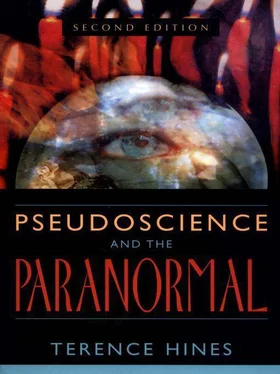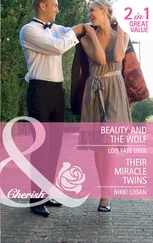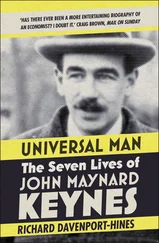It should not be thought that in our modern and “enlightened” age, witch-hunts are a thing of the past. In the 1980s and 1990s, hysteria over bizarre claims of mass abuse and killings, usually of children, by a well-organized and highly secret group of Satan worshipers swept the United States. Innocent parents and teachers were accused and many went to jail. As in the medieval witch trials, there was no physical evidence. The victims of this modern witch-hunt were not convicted on the basis of testimony extracted under torture, but by something eerily similar: the testimony of children who had been subjected to interrogation techniques such that they came to truly believe the fantastic accusations they were making (chapter 12).
The medieval witch delusion also provides what is presumably one of the first reported cases of “special pleading” for a pseudoscientific claim. Proponents of pseudoscience often claim that the usual rules of science are too strict (tacitly admitting that their evidence is scientifically inadequate to prove their claims) and that less-stringent criteria of proof should be allowed for this or that pseudoscientific claim. In this vein, Robbins (1959) notes a “distinguished professor of law at the University of Toulouse [who] advocates the suspension of rules in witch trials, because ‘not one out of a million witches would be accused or punished, if regular legal procedure were followed’” (p. 34).
An even more terrible pseudoscience, the phony racial theories of the Nazis in the twentieth century, resulted in loss of life on a scale vastly greater than that caused by the witchcraft delusion. Although the role of the occult per se in the rise of Nazism has been overestimated, it is clear that the racial theories upon which Hitler built the Holocaust were pure pseudoscience.
Another commonly heard defense of paranormal claims goes like this: “Reality is relative. If I decide to believe in astrology, then it becomes real in my own reality and works for me.” In other words, belief determines the structure of reality. An extreme version of this rather silly position is held by many parapsychologists who try to explain their critics’ repeated failures to find any evidence confirming the existence of ESP by saying that the critics don’t believe the phenomenon to be real and, therefore, for the critics, it isn’t. We’ll see in chapter 4 that a much better explanation is that the critics conduct better, more tightly controlled experiments than do the believers. In any event, this position that belief determines reality puts its proponents in a rather unpleasant position. In Nazi Germany millions of people really believed that Jews were subhuman. If belief determines reality, then this belief must really have been true. This is an absurd position, and those who hold that belief determines reality have never bothered to think their notion through to the repellent consequences of its logical conclusions. The point is that truth is independent of belief. When the proponents of a pseudoscientific claim maintain that belief determines reality, it’s a safe bet that they can’t prove their point using legitimate rules of evidence.
The examples of the witch delusion and the Nazi horrors show the great damage done by the uncritical acceptance of pseudoscientific claims. Others will be encountered throughout this book. All might well have been avoided if the public had been educated in critical scientific thinking and had simply asked: “What evidence is there that what you are telling me is really true?”
Of course, not all pseudosciences have the vast potential for damage of the witch mania and the Nazi racial theories. However, if one accepts faulty evidence, intellectual shoddiness and fraud, and twisted logic in the case of relatively benign pseudosciences, it becomes much easier to accept the same type of evidence when it is presented in support of much more damaging pseudosciences.
Chapter 2
PSYCHICS AND PSYCHIC PHENOMENA
The term “psychic phenomena” conjures up an image of Jeane Dixon foretelling the future with great accuracy, of a psychic crime fighter leading police straight to where a body has been hidden, of a spiritualistic medium like John Edward contacting the dead and relaying to the living information only the dead could have known, or of an ordinary individual having a dream that later turns out to have correctly predicted an important event. This chapter will discuss the origins of spiritualism and examine contemporary claims for such phenomena. The somewhat more scientifically respectable study of ESP, clairvoyance, and psychokinesis in parapsychological laboratories will be discussed in chapter 4, which will also discuss the well-known psychic Uri Geller, as his alleged abilities have been extensively tested in parapsychological laboratories. That Geller could equally well have been discussed in the present chapter points up the often fuzzy distinction between spectacular psychic claims and laboratory parapsychology.
Scientific investigation of alleged psychic phenomena began in the mid-1800s as a result of the worldwide interest in spiritualism. Spiritualism was born in 1848 in the small New York town of Hydesville, about twenty-five miles southeast of Rochester. Two sisters, Kate and Margaret Fox (eleven and thirteen years old, respectively), produced strange knocks and rapping in their home, which were interpreted as messages from the dead. The effects were produced by various simple tricks, as the sisters later admitted (Kurtz 1985b; Brandon 1983). An older sister took the young girls on tour, and a nationwide interest in spiritualism and communication with the dead sprang up in their wake. This interest quickly spread overseas. As interest in spiritualism grew, so did the number of spiritualistic mediums, individuals who claimed to be able to contact the spirit world and communicate with the dead. Mediums could be found in every city.
Communication with the dead took place at a seance, in which the medium and “sitters” would hold hands while seated around a table in the dark. Various phenomena occurred during the seance, varying from rather mundane rappings and knockings, through table tipping (in which the table seemed to move of its own accord), up to the most spectacular seances where “ectoplasm” would flow from the medium’s body, “actual spirits” would appear, and objects would materialize out of thin air, presumably “apported” from the spirit world. Photographs of disembodied spirits floating near mediums were also produced in some quantity. It was these sorts of phenomena that convinced so many people of the truth of spiritualists’ claims and of the reality of communication with the dead.
The rage for spiritualism attracted the attention of some of the period’s leading scientists. Most were highly skeptical and critical of spiritualism, but several attended seances and came away convinced of the reality of spiritualistic phenomena. A few then instituted often impressive studies of individual spiritualists which, they claimed, gave solid scientific support to the claims of spiritualism. This type of research and interest led to the founding in England in 1882 of the Society for Psychical Research (SPR). The goal of the SPR was scientific investigation of spiritualistic and other “psychic” phenomena. As such, it represented an alliance between the spiritualists and the small portion of the scientific community that accepted their claims. As time passed, however, the alliance weakened and finally split. The split came about not because of doubt on the part of the scientists who belonged to the SPR, but because of a fundamental difference with spiritualists over the correct interpretation of the phenomena that took place at seances (Cerello 1982).
Читать дальше












